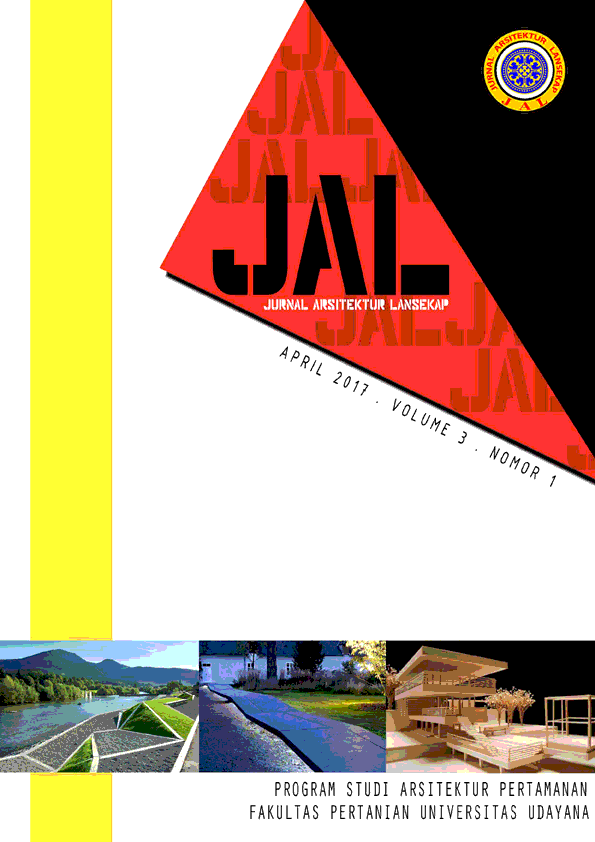Konsep Rencana Pengembangan Lansekap Subak Sebagai Kawasan Agrowisata Berkelanjutan
Abstract
ABSTRACT
Concept of Subak Landscape Development Plan As a Sustainable Agrotourism Area
Subak is one of the world cultural heritage. However, the rapid development of tourism in Bali threatens the existence of the subak. The high price of land becomes unequal to farmers' income from the agricultural sector. Agricultural sector began to be abandoned and the existence of subak began to disappear. To reduce these threats, it is necessary to develop agricultural areas by focusing on the productivity of the performances that produce quality commodities and the development of agricultural landscape potential as a tourist destination. This study aims to plan the concept for the development of agricultural and subak areas as the motor of the agricultural sector to obtain economic opportunities through the tourism sector. The research method is done by analyzing agriculture sector through subak component (Windia, 2013) and analyzing the plan of arrangement of tourist landscape through tourism development component (Inskeep, 1991). The final product of this research is the concept of sustainable agro-tourism plan on the subak landscape.
Keywords: subak, agrotourism, tourism landscape planning
Downloads
An author who publishes in the Jurnal Arsitektur Lansekap (JAL) agrees to the following terms:
- Author retains the copyright and grants the journal the right of first publication of the work simultaneously licensed under the Creative Commons Attribution-ShareAlike 4.0 License that allows others to share the work with an acknowledgement of the work's authorship and initial publication in this journal
- Author is able to enter into separate, additional contractual arrangements for the non-exclusive distribution of the journal's published version of the work (e.g., post it to an institutional repository or publish it in a book) with the acknowledgement of its initial publication in this journal.
- Author is permitted and encouraged to post his/her work online (e.g., in institutional repositories or on their website) prior to and during the submission process, as it can lead to productive exchanges, as well as earlier and greater citation of the published work (See The Effect of Open Access).
Read more about the Creative Commons Attribution-ShareAlike 4.0 Licence here: https://creativecommons.org/licenses/by-sa/4.0/.







